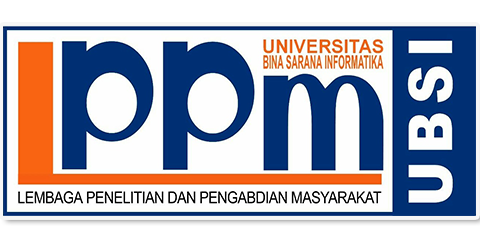Modul Pembelajaran Digital Pemasaran Daring Dengan Penghitung Harga Jual Berbasis Android
DOI:
https://doi.org/10.31294/profitabilitas.v1i1.444Keywords:
learning module, e-marketing, androidAbstract
Conventional marketing strategies have to start evolving to digital marketing. With so many technologies and tools on the internet, additional learning is needed to optimize their use in marketing. Knowledge of e-marketing is needed by business people. The 4P marketing concept states that price is one of the most important and most flexible elements, which has a significant influence on consumers' purchasing decisions. It takes consideration and good understanding in determining price. Although there is a lot of information on the internet, one of the problems is that these information are generally scattered and has to be searched. This situation sometimes causes other problems in learning, namely time and convenience. The development of a digital learning module with organized content, with a program to calculate the selling price, is expected to help facilitate the learning process about online marketing. The digital learning module is built for android based devices to achieve high accessibility. This provides convenience and comfort in learning.
References
Firmansyah, R. O., Hamdani, R. A., & Kuswardhana, D. (2020). The use of smartphone on learning activities: Systematic review. IOP Conference Series: Materials Science and Engineering (pp. 1-7). Bandung: IOP Publishing. doi:10.1088/1757-899X/850/1/012006
Global Stats. (2021, Mei). Mobile Operating System Market Share Indonesia. Retrieved Juni 2021, from statcounter GlobalStats: https://gs.statcounter.com/os-market-share/mobile/indonesia
Hanum, Z. (2021, Maret 7). Kemenkominfo: 89% Penduduk Indonesia Gunakan Smartphone. Retrieved Juni 2021, from Media Indonesia: https://mediaindonesia.com/humaniora/389057/kemenkominfo-89-penduduk-indonesia gunakan-smartphone
Hidayat, N., & Khotimah, H. (2019). Pemanfaatan Teknologi Digital Dalam Kegiatan Pembelajaran. Jurnal Pendidikan & Pengajaran Guru Sekolah Dasar, 2(1), 10-15. doi:10.33751/jppguseda.v2i1.988
Iqbal, S. Z., & Idrees, M. (2017). Z-SDLC Model: A New Model For Software Development Life Cycle (SDLC). International Journal of Engineering and Advanced Research Technology (IJEART), 3(2), 1-9
Isoraite, M. (2016). Marketing Mix Theoretical Aspects. International Journal of Research GRANTHAALAYAH, 4(6), 25-37. doi:https://doi.org/10.29121/granthaalayah.v4.i6.2016.2633
Mahendratmo, B. P., & Ariyanti, M. (2019). Analysis Of E-Marketing Mix to Consumer Purchase Decisions Traveloka. Asian Journal of Management Sciences & Education, 8(1), 72-82
Modi, H. S., Singh, N. K., & Chauhan, H. P. (2017). Comprehensive Analysis of Software Development Life Cycle Models. International Research Journal of Engineering and Technology (IRJET), 4(6), 117-122.
Priansa, D. J., & Suryawardani, B. (2020). Effects of E-Marketing and Social Media Marketing on E-commerce Shopping Decisions. Jurnal Manajemen Indonesia, 20(1), 76-82. doi:https://doi.org/10.25124/jmi.v20i1.2800
Rahdiyanta, D. (2016). TEKNIK PENYUSUNAN MODUL. Retrieved Juni 2021, from http://staff.uny.ac.id/sites/default/files/penelitian/dr-dwi-rahdiyanta-mpd/20-teknik-penyusunan-modul.pdf
Singh, A., & Kaur, P. J. (2017). A Simulation Model for Incremental Software Development Life Cycle Model. International Journal of Advanced Research in Computer Science, 8(7), 126-132. doi:https://doi.org/10.26483/ijarcs.v8i7.4136
University of Southern California. (2021). Learning Modules. Retrieved Juni 2021, from Blackboard Help for Faculty USC: https://blackboardhelp.usc.edu/course-content/adding-content-and-resources/learning-modules/
Zaenudin, H. N. (2016). Computer Mediated Communication in E- Marketing of Indonesia University Education. Proceedings of the International Conference on Ethics in Governance (ICONEG 2016) (pp. 5-9). Dordrecht: Atlantis Press. doi:https://doi.org/10.2991/iconeg-16.2017.2
Downloads
Published
Issue
Section
License
Naskah yang bapak/ibu kirimkan telah melalui proses review dan dinyatakan diterima, silahkan melakukan pembayaran sebesar Rp. 200.000 ke
Nama Bank Bank Mandiri Cabang Jakarta Kramat Raya
Nomor Rekening 123-00-0044446-5
Nama Rekening Universitas Bina Sarana Informatika
dan mengisi form serta mengunggah bukti pembayaran dan keaslian naskah, melalui link berikut: https://bit.ly/pembayaran_jurnal
Silahkan konfirmasi dengan menghubungi editor melalui WA: (+62-82213281362-A/n Suhardi)(+62-82124543004 A/n Dede Firmansyah Saefudin)










